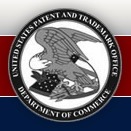Apple has been granted several patents by the U.S. Patent & Trademark Office. They involve everything from iOS devices to Macs to Apple retail stores. Following is a summary of each.
Patent number 8104911 is for a display system with a distributed LED backlight. Per the patent, each tile LED light source has a tile and a plurality of similar LED light sources on each tile connected for emitting light therefrom. The inventors are Michael D. Hillman, Gregory L. Tice, William Sauway, Sean Bailey, Ann Torres, Efrain Alcorta and Perry Anderson.
Patent number 8106630 involves a method and system for operating a portable device in a power-limited manner. Per the patent, improved techniques to manage operation of a portable electronic device having a substantially depleted battery when power is available from an external, power-limited source are disclosed. In one embodiment of the invention, the substantially depleted battery can be initially charged while a power-intensive operation is delayed.
Once the battery has adequate charge to assist the external, power-limited source in powering the portable electronic device, the power-intensive operation can be performed. In this manner, power consumption of a portable electronic device can be managed so that reliable operation is achieved without exceeding limits on power being drawn from an external, power-limited source. The inventors are David John Tupman and Steven Bollinger.
Patent number 8106836 is for hybrid antennas for electronic devices. A portable electronic device is provided that has a hybrid antenna. The hybrid antenna may include a slot antenna structure and an inverted-F antenna structure. The slot antenna portion of the hybrid antenna may be used to provide antenna coverage in a first communications band and the inverted-F antenna portion of the hybrid antenna may be used to provide antenna coverage in a second communications band.
The second communications band need not be harmonically related to the first communications band. The electronic device may be formed from two portions. One portion may contain conductive structures that define the shape of the antenna slot. One or more dielectric-filled gaps in the slot may be bridged using conductive structures on another portion of the electronic device. A conductive trim member may be inserted into an antenna slot to trim the resonant frequency of the slot antenna portion of the hybrid antenna. The inventors are Robert J. Hill, Scott A. Myers, Robert W. Schlub, Dean Floyd Darnell and Zhijun Zhang.
Patent number 8106926 involves controlling a display device to display portions of an entire image in a display area. A computer-implemented method is for controlling display of an image, in a display area, by a display device. A plurality of elements of a sequence is determined based on operation of an input device. A position in the entire image is determined, associated with the determined one of the plurality of elements in the sequence. Based on the determined position in the entire image, a corresponding portion of the entire image is caused to be displayed in the display area. Jay David Zipnick is the inventor.
Patent number 8107183 is for a method and device for hard drive shock event detection. The invention, in various embodiments, addresses deficiencies in the prior art by providing systems, methods and devices that enable the detection of a shock event in a less complex and costly manner without the need for sensing surrounding environmental conditions. Thomas R. Colligan is the inventor.
Patent number 8108144 involves location based tracking. Per the patent, location information is used to build a database of locations having associated audio, video, image or text data. In some implementations, a device includes a touch-sensitive display and collects data associated with a geographic location of interest. The geographic location of interest can be displayed on a map using an indicator.
A touch selection of the indicator provides access to the data through an interface displayed on the touch-sensitive display. One or more locations of interest can be displayed and grouped together by an attribute. The inventors are Scott Forstall, Gregory N. Christie, Robert E. Borchers and Imran A. Chaudhri.
Patent number 8108261 is for a store affiliation system. Techniques for improved interaction between online retailers and traditional brick-and-mortar retailers that provide patron-accessible networks are disclosed. The location and/or the fact that any given purchase was made from a particular retailer's patron-accessible network can be tracked for various purposes.
The invention can facilitate partnering between online retailers (i.e., online stores) and traditional "brick-and-mortar" business establishments. As an example, the invention can be used to track and give credit for online purchases at an online retailer that are facilitated by a brick-and-mortar retailer. The inventors are Claude P. Carlier, Colin Meldrum and Tyler A. Strand.
Patent number 8108633 involves a shared memory stream on multiple processors. A method and an apparatus that allocate a stream memory and/or a local memory for a variable in an executable loaded from a host processor to the compute processor according to whether a compute processor supports a storage capability are described. The compute processor may be a graphics processing unit (GPU) or a central processing unit (CPU).
Alternatively, an application running in a host processor configures storage capabilities in a compute processor, such as CPU or GPU, to determine a memory location for accessing a variable in an executable executed by a plurality of threads in the compute processor. The configuration and allocation are based on API calls in the host processor. The inventors are Aaftab Munshi and Jeremy Sandmel.
Patent number 8108685 is for an apparatus and method for indicating password quality and variety. The patent involves a method of presenting password information to a user, the method comprising: receiving a password; determining the number of unique character sets utilized in the password; and displaying the number of unique character sets that are contained within the password. John C. Hurley is the inventor.













